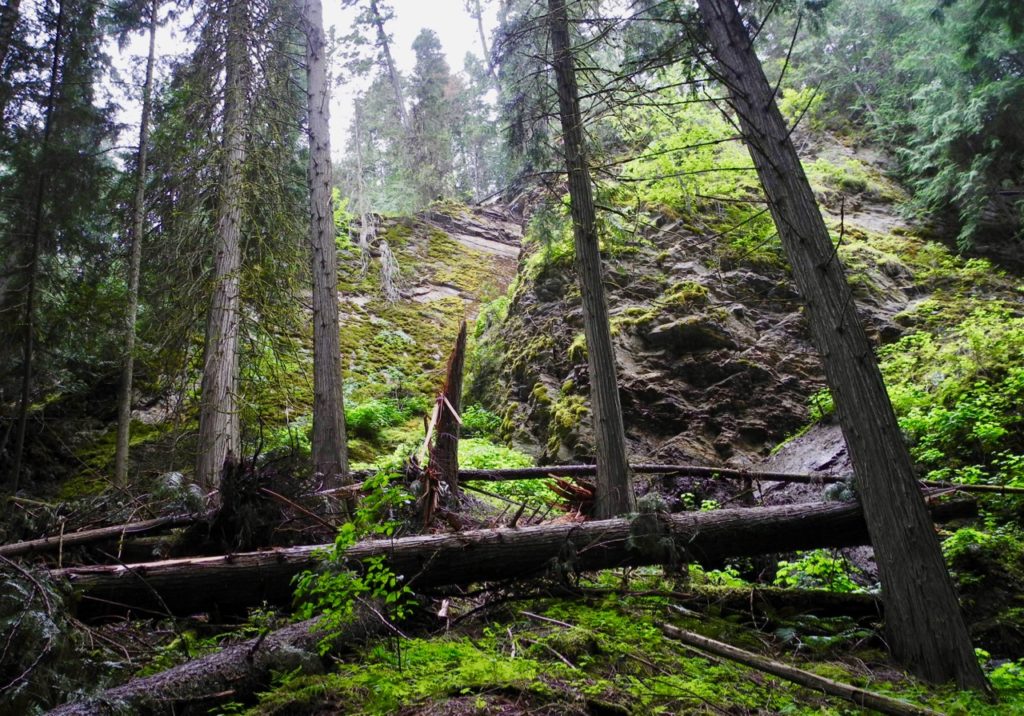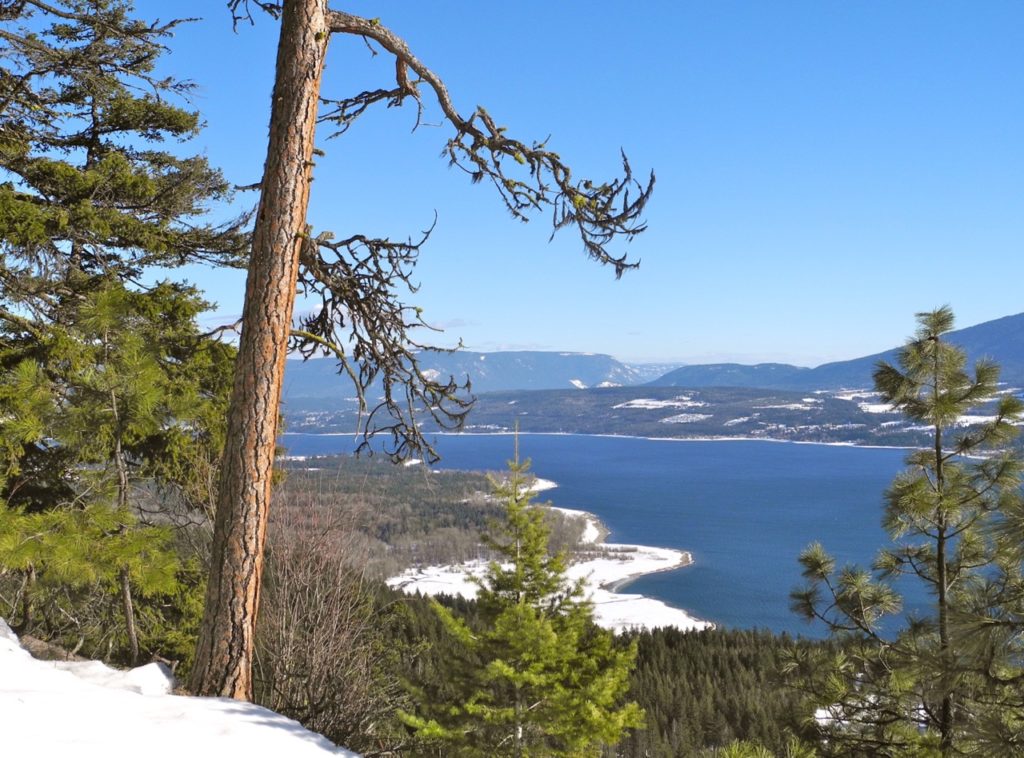
The amazing view from the Lee Creek bluffs, photo by Jim Cooperman
One positive result of the pandemic is that because we are forced to stay home, many of us are gaining a greater appreciation of our home place. Modern day humans have become hooked on constant stimulation by endless distractions, whether from screens, games or traveling to new places. Now, with the travel option gone, people are flocking to the local trails where they can experience the beneficial power of nature.
There are many books and studies written about the benefits of walking in forests, including the 1984 classic, “The Biophilia Hypothesis” by Edward O. Wilson, that describes how humans possess an innate need to seek connections to nature. The Japanese practice called shinrin youku or forest bathing is a proven therapy that reduces stress, increases happiness, frees up creativity, boosts recovery from illnesses and lowers heart rate and blood pressure.
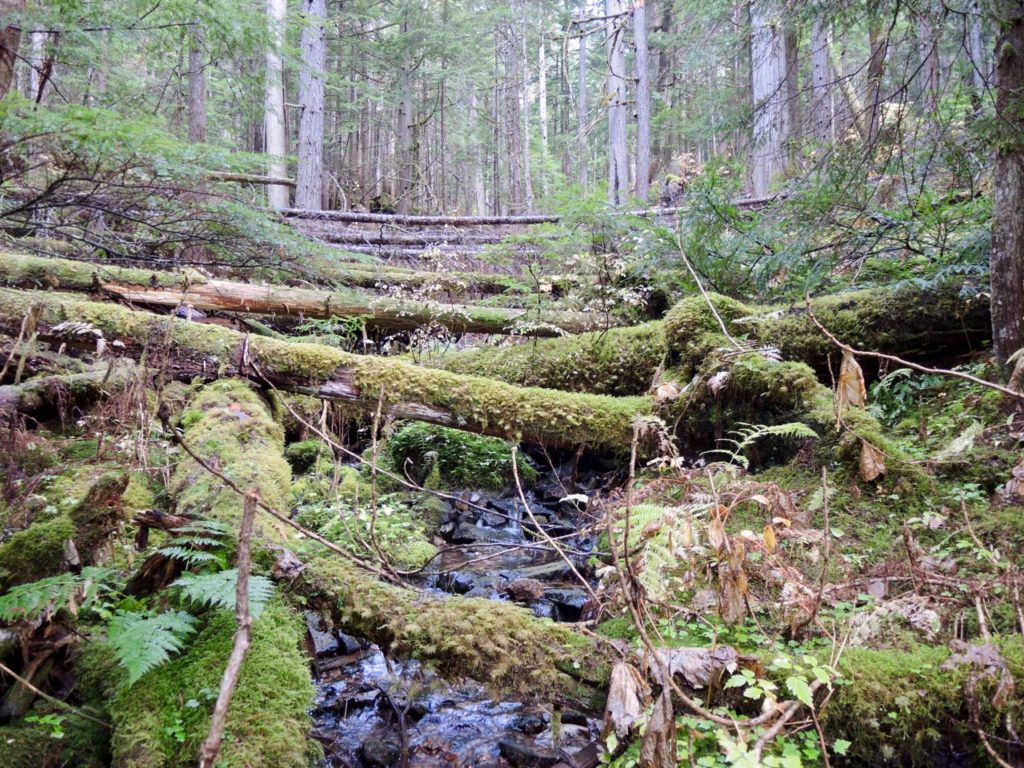
A recent discovery for me was learning about the medicinal values of breathing in the forest aroma that is filled with pinene aerosols. These chemicals flow from our lungs into our circulatory system where they boost our immune systems. Indigenous peoples were well aware of the antibiotic and antiviral properties of trees and utilized the components in their medicines.
Then, of course, there are the psychological values of experiencing nature, as there is nothing like a meditative meander through the woods to clear your mind of anxiety, inspire your creativity and feel more at one with the world around you.
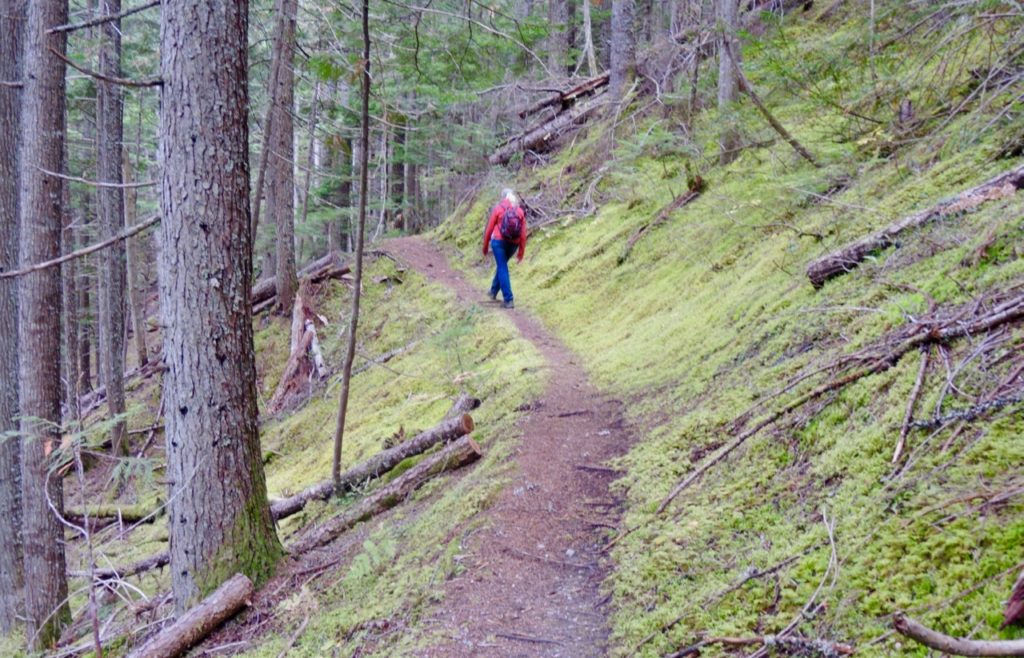
While it is always fun to explore new places, there are many benefits to experiencing the same natural surroundings daily. If one lives within walking distance of a forest path, there is much joy in repeating one’s visits. Our need for stimulation from something new everyday can also be achieved by witnessing the changes that are constantly occurring including the weather, the trail conditions, the wildlife, and the seasonal variations, at different times of the day. As well, there is always something new to discover or become aware of during each visit by using all of our senses.
For the last few years, my wife Kathi and I have made it a goal to hike every day that we are not somewhere else on the trail behind our property up to the Lee Creek bluffs where there are extraordinary views of Shuswap Lake, from Copper Island to beyond Chase. Some days we have to slog through deep snow using snowshoes, or tread carefully on the ice using boot crampons. The hike can vary from one hour to three, depending on the conditions and how long we sit on a bench at the top to contemplate, chat and admire the view.
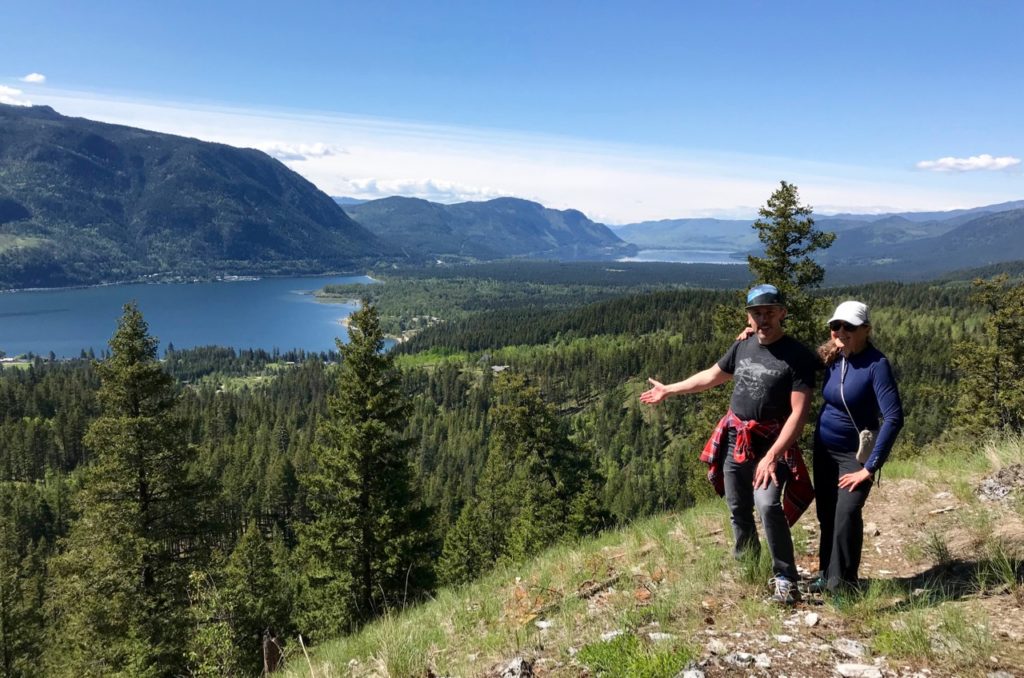
The focus changes daily, from inner thoughts to admiring the trees to observing the new growth in the spring. There are the very special trees that command our attention, including some massive old growth Douglas fir vets with their blackened thick bark from a long-ago forest fire, the giant leaners that defy gravity, the large, two-foot diameter fir that splits into two trunks just a few feet off the ground, the wizened, twisted and bent scrub tree and the wildlife rich snags that are slowly decaying.
It is a steep, challenging climb up the hillside, but well worth it as these hikes are such a great way to exercise. Last year, I was able to do the hike 142 times and this year it could be even more this winter, given that warm temperatures deter us from skiing. One day, the Lee Creek Bluffs will hopefully become well-used by the public, as part of the CSRD trail network, as it has been in the parks plan for over a decade and the Trail Alliance has prepared the initial design.
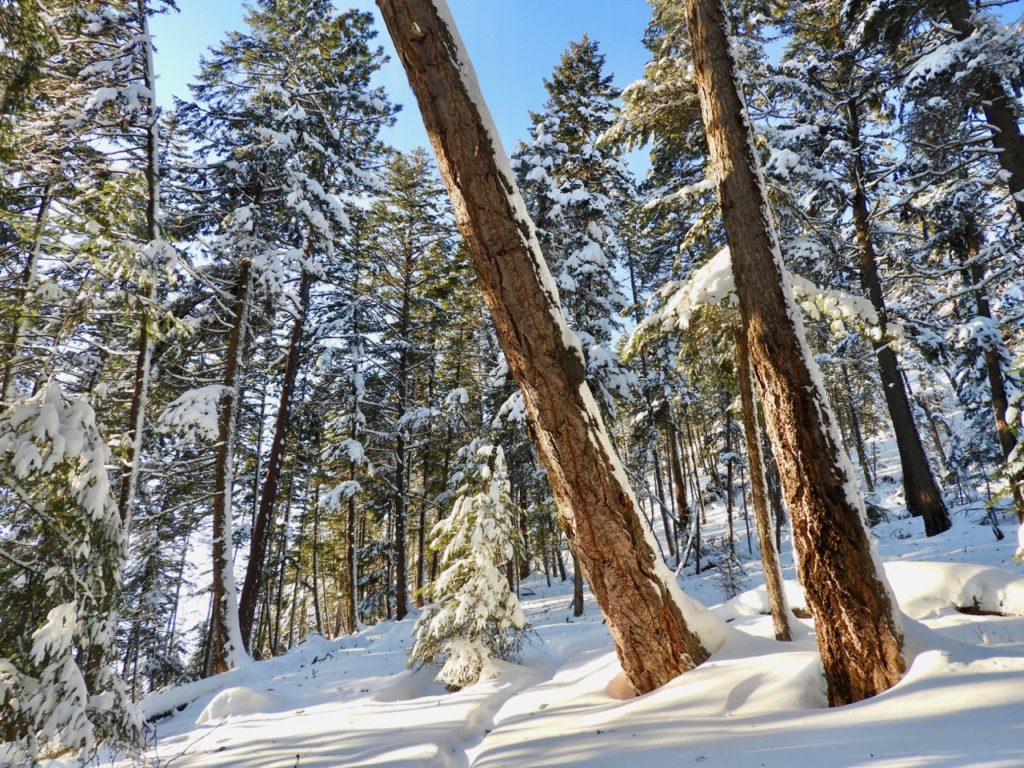
We are privileged to live in the Shuswap where there is so much accessible public land to explore and so many diverse trails to enjoy. Despite the pandemic, the good times are always here to experience during any stroll into the forest.
POSTSCRIPT
Much more can be written about this topic, as experiencing nature provides so many benefits. For many of us, spending time in the forest can be a spiritual experience filled with reverence for the beauty, the complexity and the wonder of the natural world. It is also a time to unplug from technology and clear one’s mind of the countless, nagging stresses of our overly connected world filled with the constant input of news, advertising and chatter. Time in nature provokes happiness that in turn brings energy, healthy vibes, passion and creativity while at the same time refreshing one’s innermost feelings resulting in rejuvenation and joy. Note too that many of these benefits can be unconscious and although forest visitors may be unaware, the result will nonetheless be an elevated mood and a more positive outlook on the day. Plus, the effects can be cumulative, especially if spending time in nature becomes a routine.
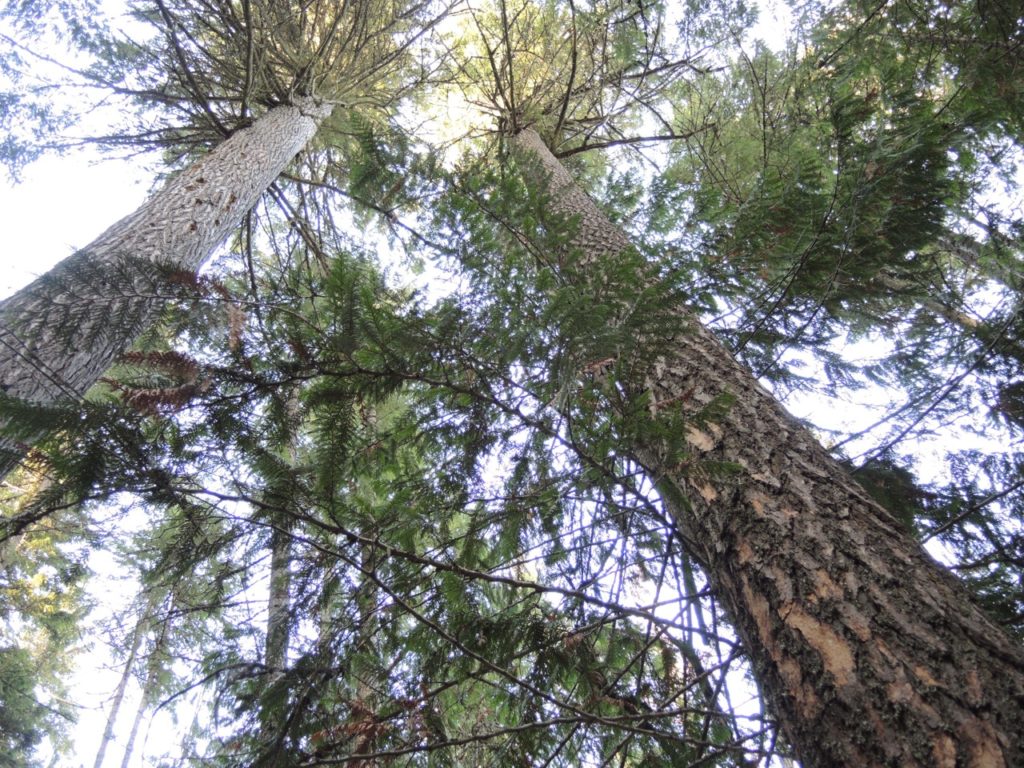
If one is able to head out from home to experience a trail, there are environmental benefits as well because avoiding driving results in less pollution. This is why we are so lucky to live in the Shuswap, as most homes are within walking distance of a nature trail, or at least just a short drive away from one. Imagine if more people realized the advantages of staying in one’s home place after having been forced to during the pandemic. The result could be far less airline travel with far less carbon dioxide going into the atmosphere.
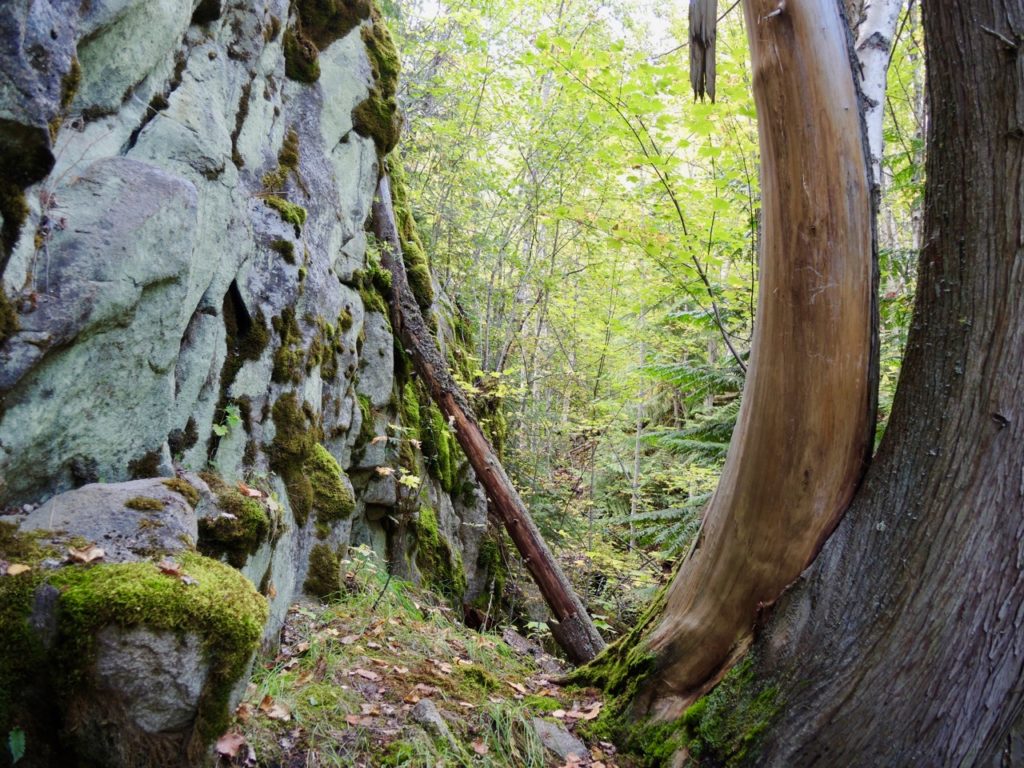
Time in nature can also be meditative and blends well with other practices such as yoga. Deep in a forest, one can close their eyes to focus on the sounds and the smells, and concentrate on the ecological complexity of nature. There is a alway that special tree to hug and feel the texture of the bark. So many types of art can be inspired by nature, from photography, drawing and painting to music, poetry and fiction. From the trees to the underbrush, to the lichens and fungi, there is almost always some part of nature to bring out ones creative juices. Then imagine a world after COVID where we could significantly reduce our device use, continue to spend more time in nature and also share more joy with real people rather than with screens.
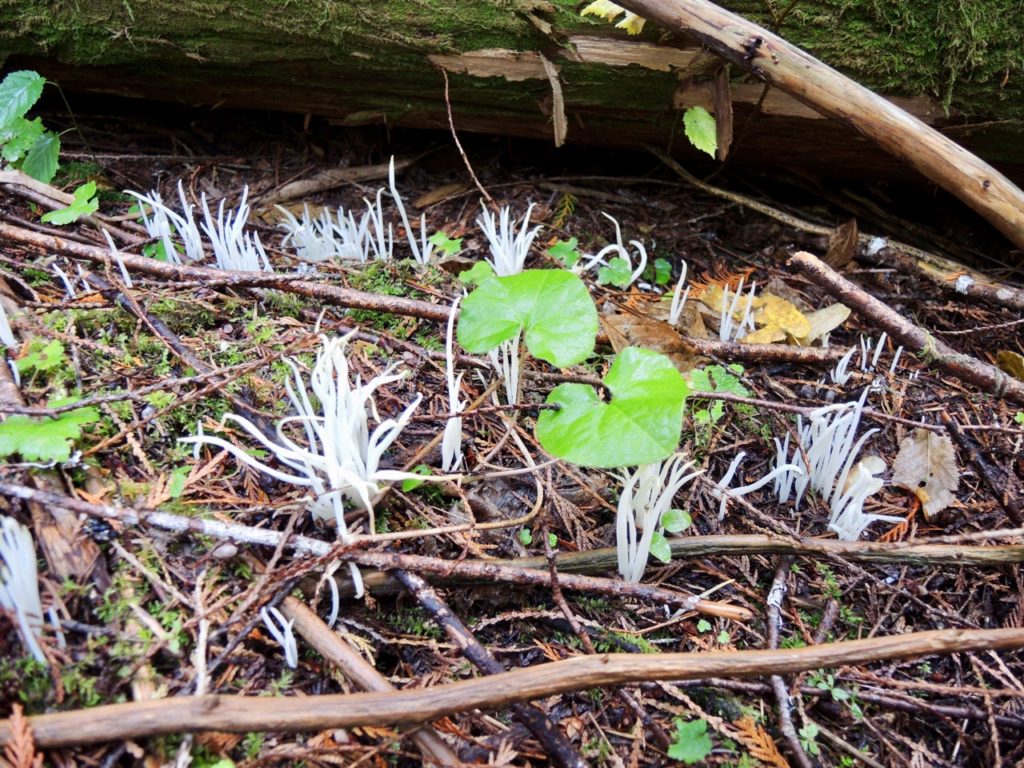
Here is how Ging Lee described the values of spending time in a forest in this 2017 Time Magazine article about forest bathing:
The key to unlocking the power of the forest is in the five senses. Let nature enter through your ears, eyes, nose, mouth, hands and feet. Listen to the birds singing and the breeze rustling in the leaves of the trees. Look at the different greens of the trees and the sunlight filtering through the branches. Smell the fragrance of the forest and breathe in the natural aromatherapy of phytoncides. Taste the freshness of the air as you take deep breaths. Place your hands on the trunk of a tree. Dip your fingers or toes in a stream. Lie on the ground. Drink in the flavor of the forest and release your sense of joy and calm. This is your sixth sense, a state of mind. Now you have connected with nature. You have crossed the bridge to happiness.
But it is just as easy to forest-bathe without a guide. And there are many different activities you can do in the forest that will help you to relax and to connect with nature. Here are some of the things people do: forest walking, yoga, eating in the forest, hot-spring therapy, T’ai chi, meditation, breathing exercises, aromatherapy, art classes and pottery, Nordic walking and plant observation. It doesn’t matter how fit – or unfit – you are. Shinrin-yoku is suitable for any level of fitness.
More details about the advantages of breathing in the forest air from another Time Magazine article by Alexandra Sifferin:
Some research suggests that when people are in nature, they inhale aromatic compounds from plants called phytoncides. These can increase their number of natural killer cells, a type of white blood cell that supports the immune system and is linked with a lower risk of cancer. These cells are also believed to be important in fighting infections and inflammation, a common marker of disease.
In one study, researchers found that people who took a long walk through a forest for two days in a row increased their natural killer cells by 50% and the activity of these cells by 56%. Those activity levels also remained 23% higher than usual for the month following those walks.
Nature has a way of making people feel calm, and exercising outside can strengthen that effect. A small 2015 study found that people who walked for 90 minutes outside were less likely to ruminate on their problems and had less activity in the brain area linked to depression, compared to people who took similar walks but in urban areas. “Nature becomes a major distraction from all the stresses of life,” says Peeke.
Exercising outdoors is not only convenient, but it’s less expensive than a gym membership. It also cuts costs for the community. A recent study in England of “green exercises”—those done outside, including dog walking, running, horseback riding and mountain biking—estimated that the health benefits of doing physical activity in nature can save around $2.7 billion a year. “All you need is the right pair of shoes, and you can exercise on your own time,” says Peeke.
